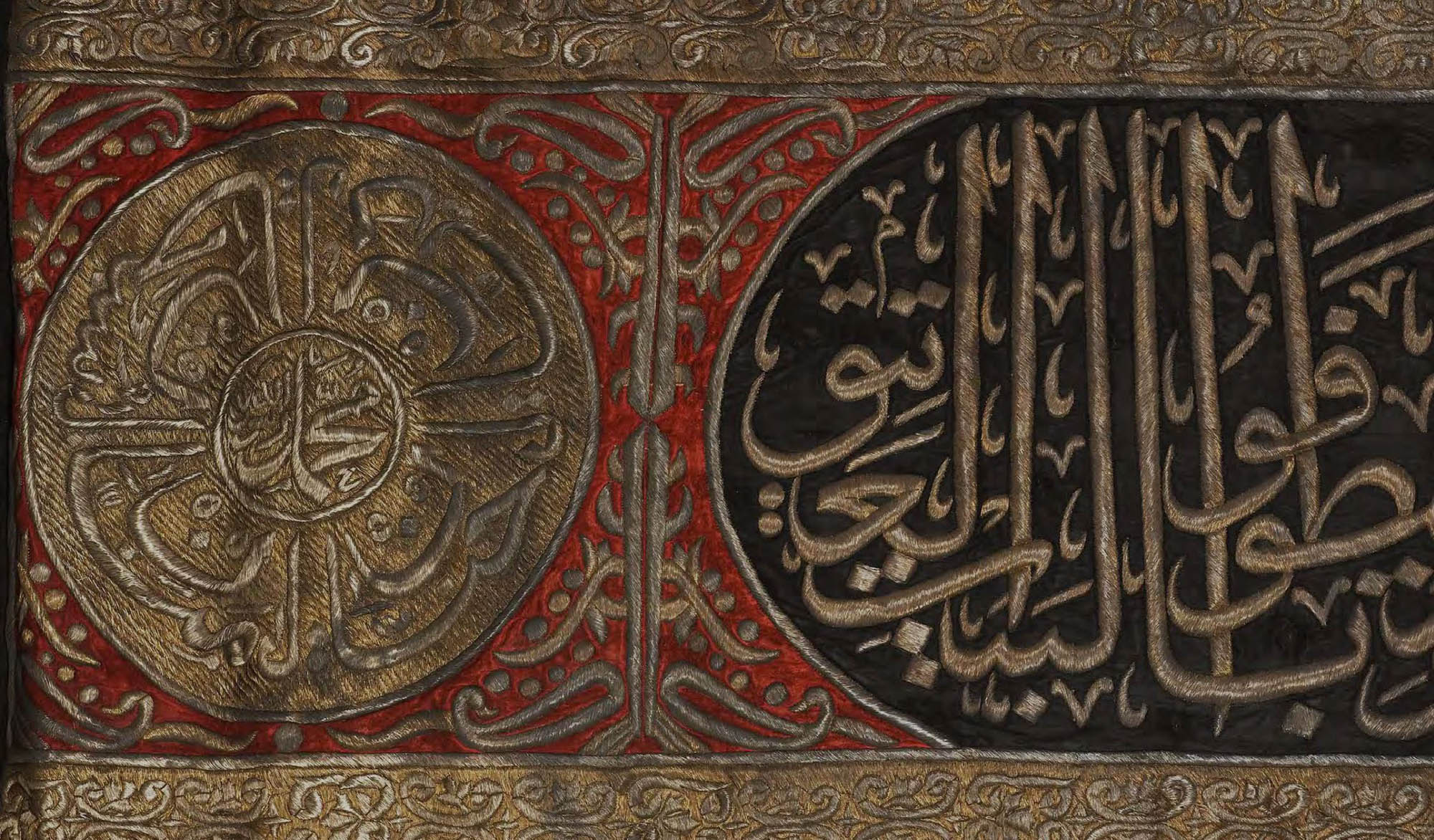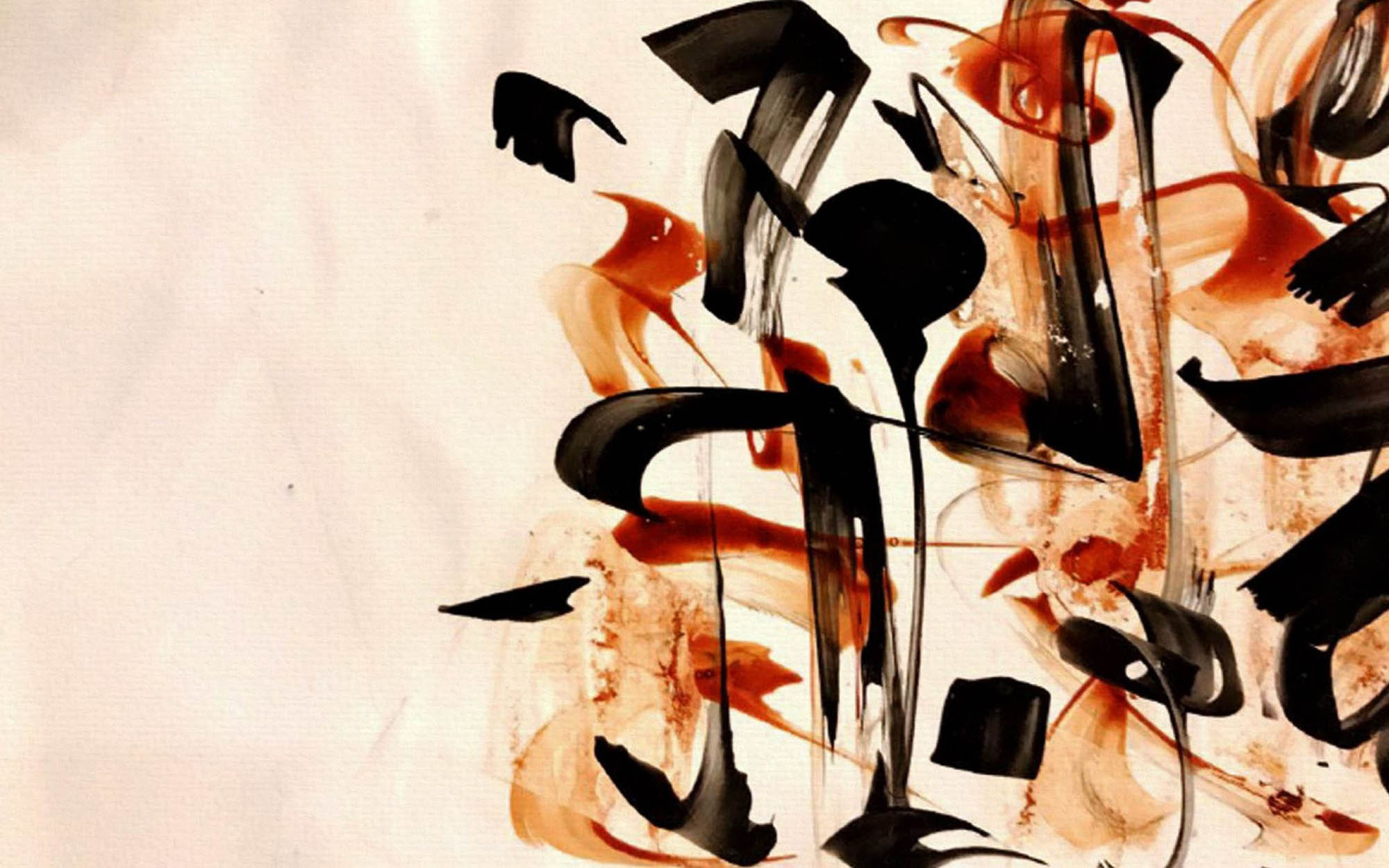Ceremonial belt: The Hizam of Kiswa
Part of a hizam belonging to a kiswa. Cairo, dating to the late 19th-early 20th century.
The Eid tradition in the Muslim world is a festive and joyous time, marked by various rituals and traditions, including Muslims donning new clothes. It is also the tradition for Islam’s holiest site, the Ka’ba—Bait Allah or the House of God— positioned inside Makkah’s Masjid al-Haram, to be draped in a new ceremonial cover.
The Holy Ka’ba receives a new woven drape of black silk, embroidered with gold and silver thread every year during the pilgrimage season. When the former kiswa is taken down, it is divided, and either gifted to dignitaries or sold to raise money for charity.
Featured here is one of the most prominent kiswa ornaments, the hizam (belt), that traditionally runs the length of the Holy Ka‘ba’s upper perimeter. This eight and a half meter long black silk fragment, decorated with red silk appliqué and embroideries of silver and silver gilt wire over cotton and silk thread padding, once belonged to a 47-meter long belt (hizam), embroidered with
Qur’anic verses.

Part of a hizam belonging to a kiswa. Cairo, dating to the late 19th-early 20th century.
Black silk with red silk appliqué, embroidered in silver and silver gilt wire over cotton and silk thread padding, AKM823.
The inscription on this fragment contains verses 27-29 from chapter 22 (Al-Hajj) of the Holy Qur’an:
“And proclaim to mankind the hajj. They will come to you on foot and on every lean camel, they will come from every deep and distant mountain highway. That they may witness things that are of benefit to them, and mention the name of Allah on appointed days, over the beast of cattle that He has provided for them. Then eat thereof and feed therewith the poor who have a very hard time.
Then let them complete their prescribed duties and perform their vows, and circumambulate the Ancient House.” (Qur’an 22:27-29)
The roundels contain further Qur’anic references that mention ‘God the Eternal’ as well as the Prophet Muhammad (PbuH).
The joy of placing such an exquisite and meticulous new cover, including all its ornaments like the hizam, is a true labor of love and is symbolic of thanking the time that has passed and welcoming a new chapter.
Written by Special Guest Contributor: Dr. Ulrike Al-Khamis, PhD, the Director of Collections and Public Programs at the Aga Khan Museum. In each issue, we will feature a special treasure from the Aga Khan Museum, one that tells a story, captures a moment and inspires conversation.


